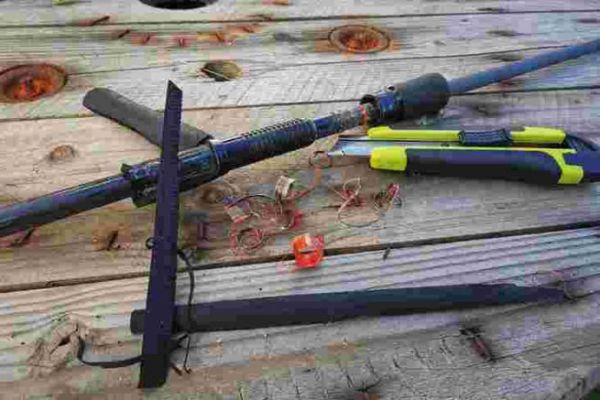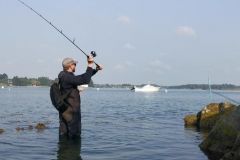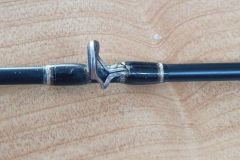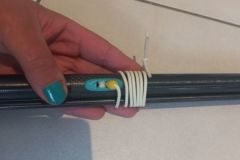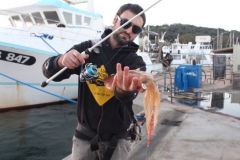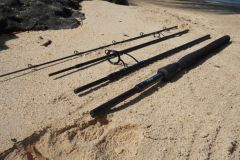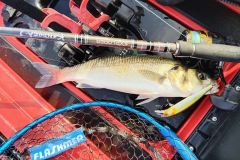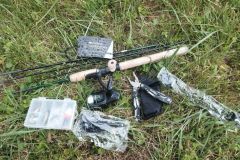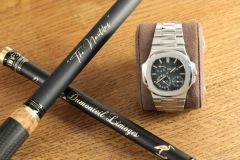I've been building my rods for several years now, and I recently had the urge to give a facelift to one of my first creations, which has been with me on every outing but for which time has left its mark. This blank is the North Fork Composites (NFC) MB 739-IM, a 2.21m rod that I use for fairly heavy vertical fishing and for pulling with sets between 30 and 80 grams.
Removing the handle
Before you start dismantling a rod, you need to take every precaution to avoid damaging the blank. An uncontrolled cutter stroke can cause irreversible damage.

Start by removing the EVA grips with a cutter, taking care not to touch the blank. I first make a vertical cut, then a horizontal one.

Remove decorative rings and ligatures
The rings are held in place with binding wire and then varnished.
To remove the wire/varnish assembly, use a cutter.
I'll give you an outline of how to do it, though, you'll find a full article on the subject here.
Use the cutter horizontally to remove the varnish layer and cut the wire, taking care not to reach the blank. Remove the ligature.
For the rings, to limit the risk of contact between the blade and the blank, I attack the ligature on the leg of the ring.

The reel seat
This one is epoxy-bonded, so I use a heat gun to peel it off. You can use any heat source of around 100 degrees. Turn the rod with one hand as you heat the reel seat. Be careful not to overheat so as to melt the plastic of the reel seat.

Now that all the elements have been removed, all that's left is to lightly sandpaper the surface with 220-grit sandpaper to remove any traces of glue.

I then reassembled this rod and here is the before/after result:


 /
/ 